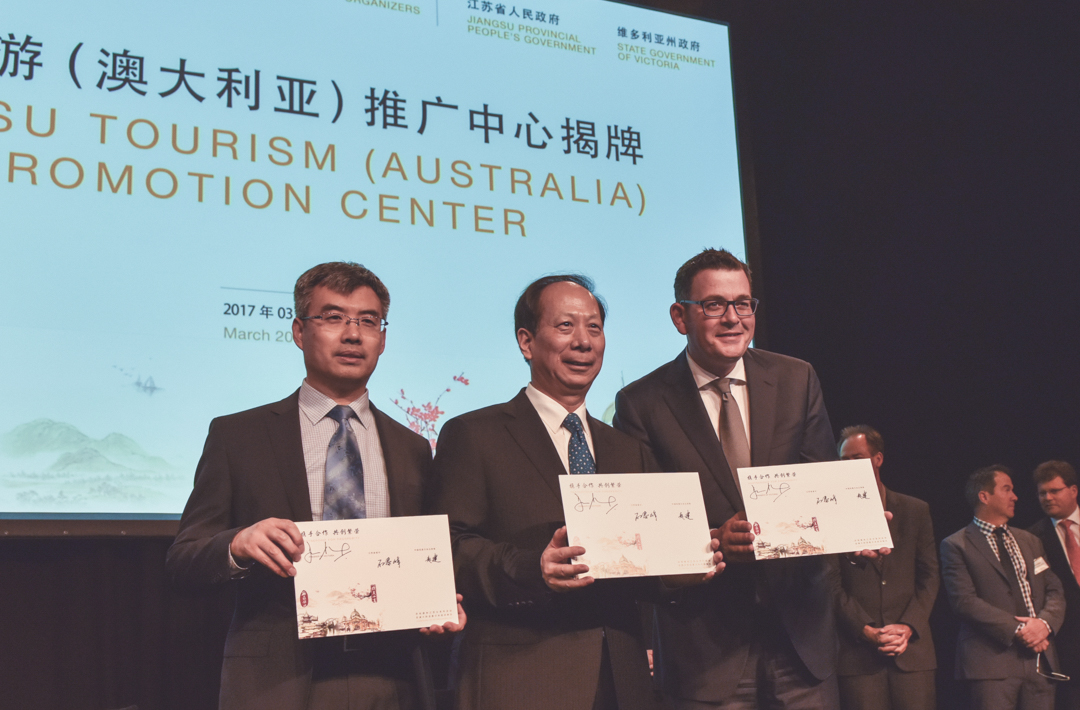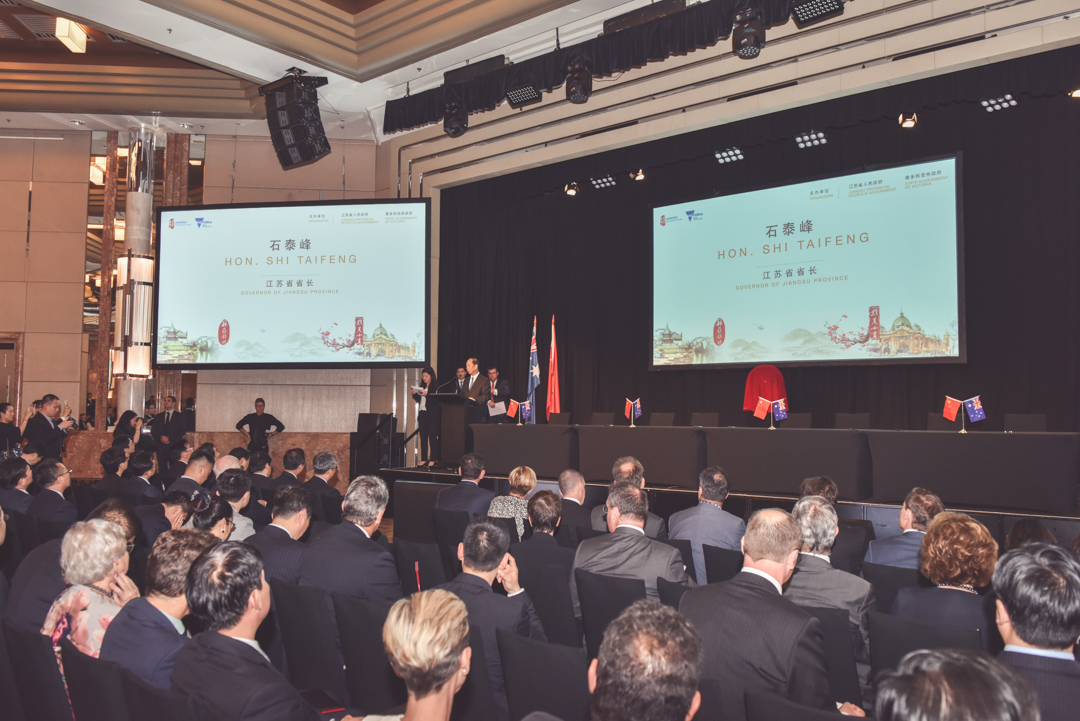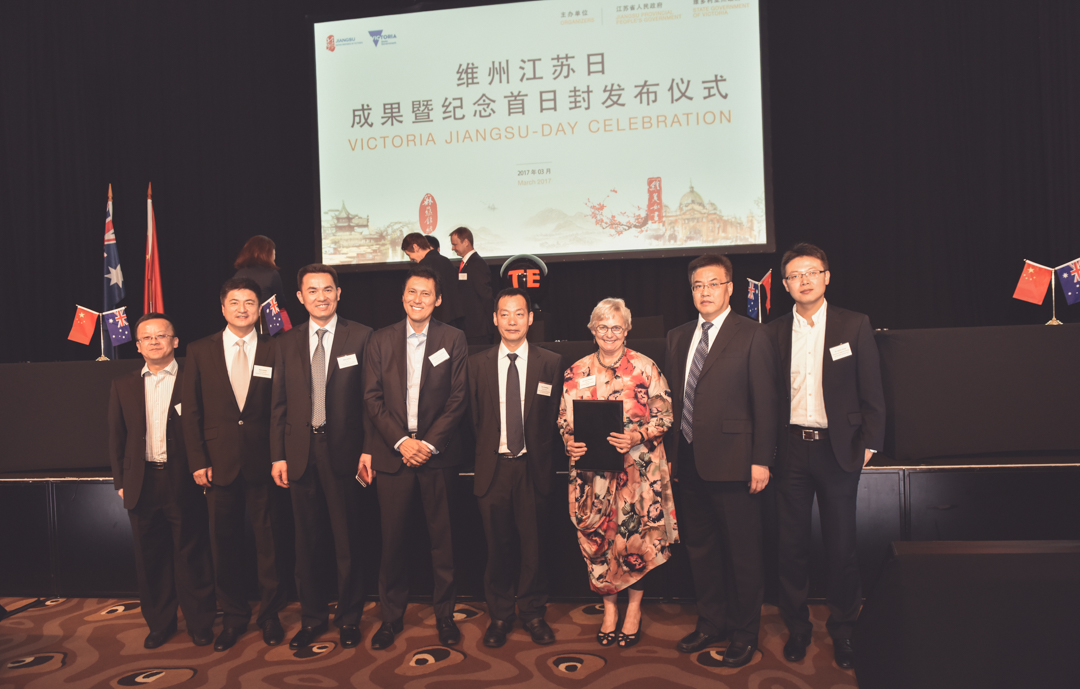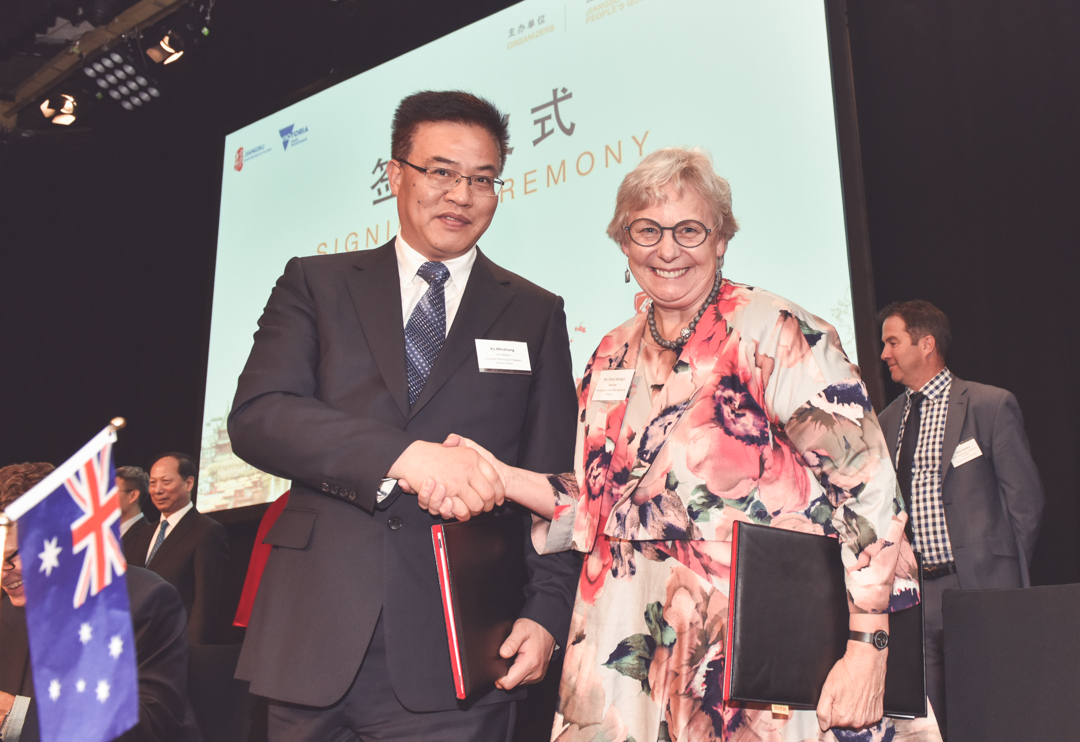The CRC for Water Sensitive Cities to support Jiangsu Province Ecological and Sponge City Initiative, China
On Thursday 23 March, the Victorian Government and the Jiangsu Provincial Government reaffirmed their commitment to strengthen Victoria–Jiangsu cooperation in improving urban water management, with the two governments signing a Memorandum of Understanding (MoU) recognising that good urban water management is a foundation of the liveability of our cities.
Witnessed by the Premier of Victoria, Hon. Daniel Andrew, and the Governor of Jiangsu Province, Mr Shi Taifeng, the MoU was signed by Victoria’s Department of Environment, Land, Water and Planning (DELWP) and Jiangsu’s Department of Housing and Urban-Rural Development (DHURD). Victorian Minister for Water, Hon Lisa Neville, signed the MoU on behalf of DELWP with Deputy-Director Chen Haodong of the DHURD.

Facilitated by the CRCWSC, the collaboration illustrates the potential of joint efforts by organisations and regions facing similar challenges. Here, for example, cities and towns in the two sister states are working towards comparable urban water objectives: both regions are striving to increase their resilience to climatic extremes of floods and droughts, and working to reduce the impacts of urban growth on the ecological health of the water environment. From this collaboration, Victoria is keen to learn from Jiangsu’s approach to implementing programs that address urbanisation challenges at a large scale, while Jiangsu would like to learn from the Australian approach to and experience in implementing water sensitive urban design.
The MoU stipulates that the Cooperative Research Centre for Water Sensitive Cities (CRCWSC) will work with Jiangsu Water Supply Security Centre to facilitate collaborative research, research transfer. This will include joint projects between key organisations from Victoria (and Australia) and Jiangsu Province to deliver water sensitive city initiatives in Jiangsu Province. The 83 organisation partners of the CRCWSC include DELWP, Monash University, Melbourne Water, South East Water, the City of Melbourne, and 15 other Victorian-based water utilities, private sector, local government organisations.

Over the past four years, the CRCWSC has been working with the City of Kunshan in Jiangsu Province to guide its transformation into a water sensitive city, and over AUD$240million of capital works have already been directed to improving the water quality, flood protection, and liveability of that city. The success of these projects has now led to the city embarking on an ambitious capital works program that involves over AUD$1billion of public and private investments. And the CRCWSC, together with its partners, have a continuing role in guiding the execution of this program.

CRCWSC CEO Professor Tony Wong commented on opportunities at hand for Australian knowledge.
“The success of the partnership with the City of Kunshan provided the template and catalyst for expanding Victorian enterprise participation to transform cities and towns in Jiangsu Province into places that are more sustainable, resilient, and liveable.”
“In addition to our ongoing work in the City of Kunshan, we now have the opportunity to immediately influence capital works investments in a further two cities, to be nominated by Jiangsu Province. This will strengthen pathways to market for Victorian and Australian expertise, and facilitate new partnerships with these additional cities and associated China-based enterprises.”
The Victorian Government’s new water plan, Water for Victoria, clearly articulates the objectives of sustainability, resilience, and liveability in cities and towns through innovation in urban water management and governance.
“The CRCWSC has, since its establishment, demonstrated the value of fostering strong research-to-practice partnerships across multiple sectors, and facilitating whole-of-government and community-focused approaches to contemporary urban water management and urban planning and design,” said Ms Cheryl Batagol, Chair of the CRCWSC.
“Extending these partnerships into the international arena, and showcasing Victorian and Australian expertise in urban water management, is indeed a very exciting prospect for CRCWSC partner organisations.”

As a first action from the DELWP–DHURD MoU, the City of Kunshan and the CRCWSC also signed a new MoU that facilitated two additional CRCWSC participants: the Kunshan Bureau of Housing and Urban-Rural Development, and the Kunshan Bureau of Garden and Landscape.
More significantly, the MoU, signed by CRCWSC Chair Cheryl Batagol and Kunshan Vice-Mayor Xu Minzhong, stipulates the establishment of a 10 Ha innovation park to bring Australian research, leading-edge technology, and Water Sensitive City products into Kunshan for demonstration, incubation, local application, and commercialisation.
The CRCWSC has been commissioned to lead the park’s development and master planning, and to undertake landscape and building concept designs that will showcase CRCWSC innovation at building and public open space scales. The Victoria–Jiangsu Sponge City Innovation Park will link with Kunshan City’s Sponge City Performance Assessment and Testing Facilities; the two will collectively serve as the research demonstration and technology validation facility for Australian innovation for application in China. The CRCWSC will guide the operation of both the innovation park and technology validation facility: efforts that will continue a mission to collaborate on and catalyse water sensitive transitions for the world’s cities and towns.